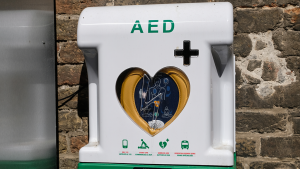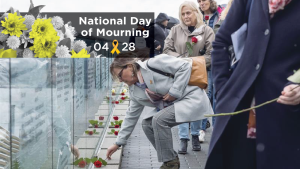Program aims to find reliable method to detect lead found in ceramic tile glazes
This summer, the BC Construction Safety Alliance (BCCSA) is launching a research program designed to reliably measure lead exposure resulting from the dust generated by cutting through ceramic tile glazes.
Lead is no longer permitted in new paint and plumbing products, however, lead continues to be used in ceramic glazes for tiles in residential and commercial construction. The lead poses little hazard if the glaze remains undisturbed, but lead-containing dust can be released by workers in the renovation and restoration industries.
Safety protocols require contractors to create exposure control plans for lead dust, but there’s little information for ceramic tile glazes.
U.S. Environmental Protection Agency regulations, for example, do not include ceramic tile glazes, because they’re neither considered “surface coatings” nor “painted surfaces.” In B.C., there is no guidance in WorkSafeBC publications on the level of risk of exposure to lead from ceramic tiles.
The alliance’s Fire, Flood and Restoration Program Technical Advisory Committee continues to work on developing a broad methodology for accurately testing exposure to lead in the workplace to produce accurate exposure control plans.
“However, chemical testing for lead exposure to dust produced by cutting tiles has proved challenging, because ceramic tile material is difficult to dissolve,” says Melanie Gorman-Ng, health and exposure scientist with the BCCSA. “The labs aren’t confident that their results are reliable because there are currently no standardized methods for analyzing lead in dust from ceramic tiles.”
The research program, initiated under the BCCSA’s Research, Development and Opportunity fund, will evaluate and identify the most relevant and cost-efficient method of quantifying the health risks posed by exposure to ceramic tile dust.
This summer, the program is recruiting volunteer contractors in the Lower Mainland to assist with the study in partnership with VOHS Consulting Group Inc.
Workers will wear personal air sampling devices and field researchers will collect:
- Bulk samples of ceramic tiles
- Personal occupational samples of lead in air
- Personal occupational samples of respirable crystalline silica in air.
Ceramic samples and lead air samples will be submitted to Northern Analytical Laboratory Services (NALS) at the University of Northern British Columbia. Silica samples will be submitted to an American Industrial Hygiene Association-accredited laboratory.
NALS will test ceramic samples against similar samples with known lead content and also test pulverized ceramic tile samples containing little or no lead after known quantities of lead oxide are added. Once the most suitable detection method has been identified, ceramic samples will be matched to air samples.
The project is collecting silica samples for two reasons. First, the data on ceramics can be added to the database of BCCSA’s Silica Control Tool™, which helps employers control silica risk exposure.
“Secondly, if chemical methods of assessing lead content in ceramics prove unsatisfactory, we may be able to use crystalline silica exposure as a proxy for lead exposure,” says Gorman-Ng. “If silica presents the greater risk when working with lead-containing ceramic tiles, we may focus on controlling silica exposure, which will control lead exposure at the same time.”Research results will be shared in early 2024 at which time contractors will be provided with a method to determine if these activities are high-, medium- or low-risk.
The sampling phase of the research begins in June and will run for the summer. Contractors working with ceramics who want to help with the initiative should email Melanie Gorman-Ng at mgorman.ng@bccsa.ca, or call 604.636.3693.
This content is an Industry Special by BCCSA in collaboration with ConstructConnect™ Media. To learn more about BCCSA, visit www.bccsa.ca.











Recent Comments